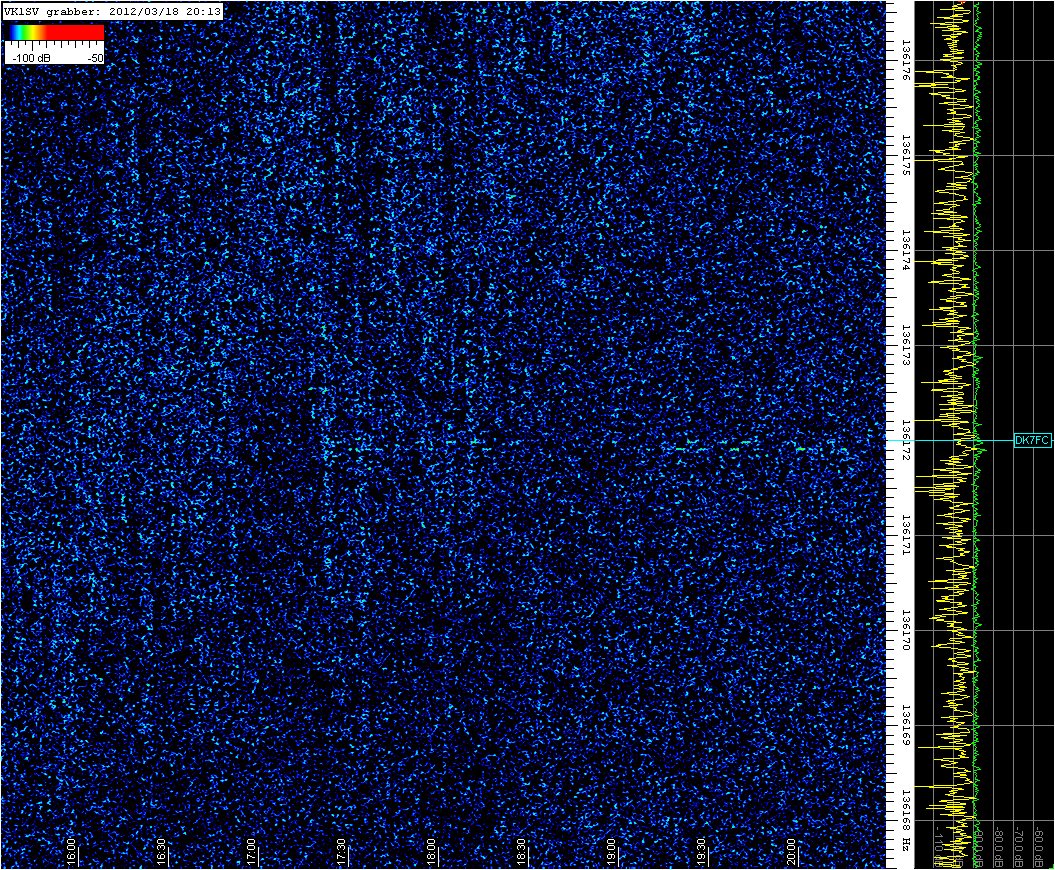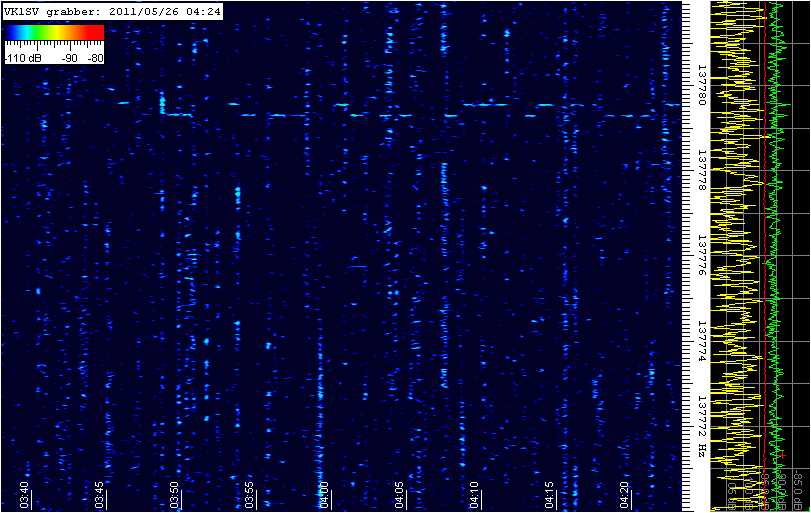
This page contains some of the more interesting snapshots of this grabber.
Kuni, JA7NI, is the first amateur to reach my grabber and his signal arrived in Canberra all the way from Japan, some 8000 km away! JA7NI is capable of 1 W EIRP which is really hard to achieve, as most LF ethusiast will already know. This will be a record that is hard to beat, but you never know!

John, VK3ACA, made an appearence in my grabber yesterday. He was transmitting QRSS10 so the trace is not very readable, but I have confirmation that the trace below is indeed his. The grabber is "fine tuned" for QRSS60, so faster QRSS modes may be hard to read.
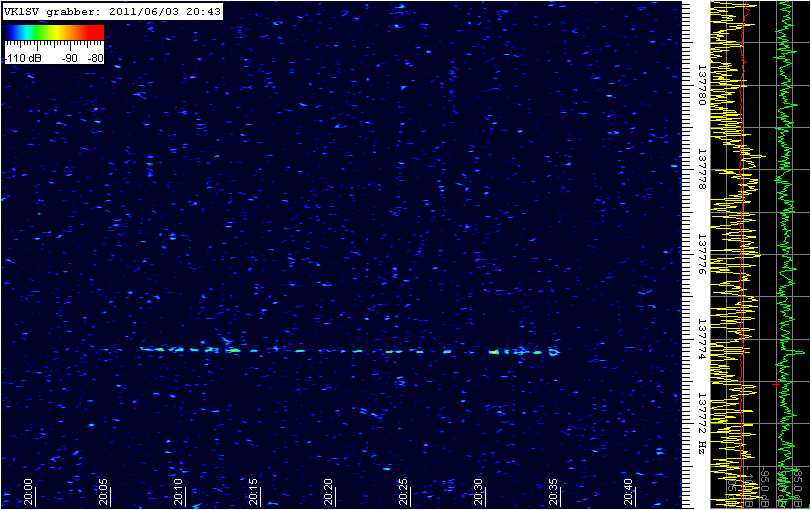
JA7NI made another appearance in my grabber yesterday. Local QRN was relatively low, but QSB was quite severe.

Last night signals from JA7NI were again visible on the grabber. The traces started around mindnight local time with the best trace appearing at 0440 local time when JA7NI transmitted a "NI" at QRSS120 speed.
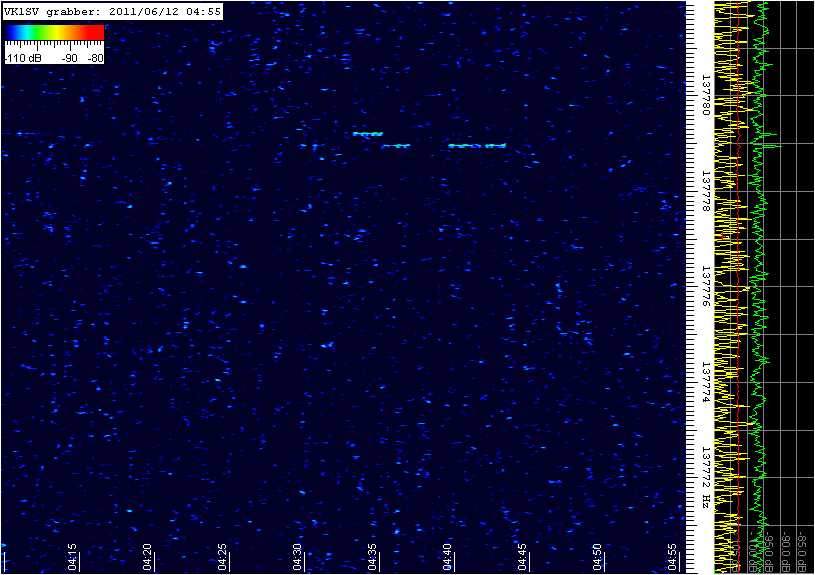
Last night Steve, VK2XV, was transmitting on 137.78 kHz. His signal was visible through the night with some fading all the way to the morning when ground wave takes over, signal becomes stronger (given the distance) and the fading goes away. Steve's transmitter output was 10 W and he was using his "wire over the cliff" antenna. You can read all about it on his LF blog: http://vk2xv-136khz.blogspot.com/
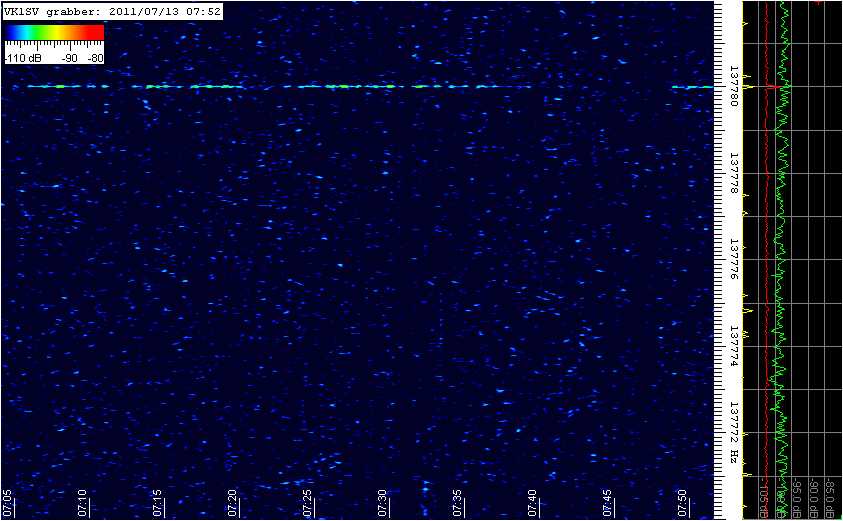
Steve, VK2XV, is continuing with his transmission tests on 137.78 kHz. He is now transmitting the letters "XV" in QRSS60 and his signal is very strong over here - in fact it has been detected even further away, in Moe VK3.
In the following spectrogram the XV is clearly visible.
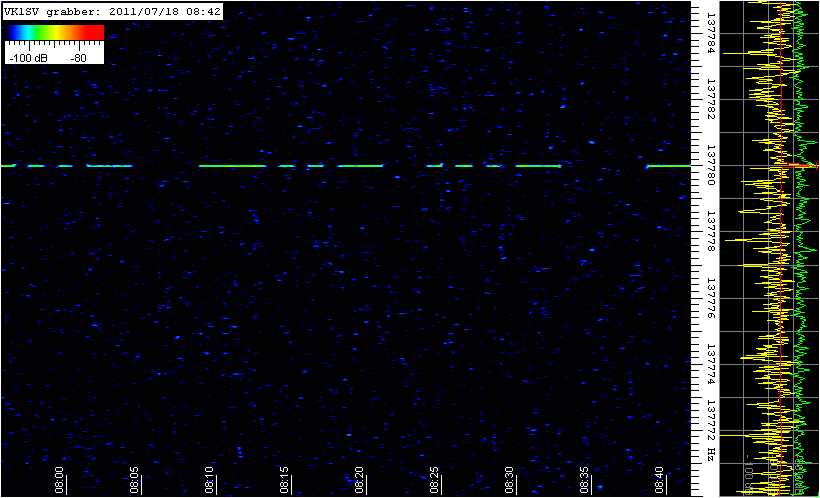
For the past few days, I have been monitoring 495 kHz looking for QRSS signals from the 600m experiment stations from the US. Last night, I captured something that may be part of Ralph's (W5JGV, WD2XSH/7) transmission. Ralph has been transmitting "H7" in QRSS60 for the past few days.

What I see in this spectrogram is perhaps the last dot of "7" followed by a "H", followed by a dash that may belong to the next "7". I admit that this is not identification beyond doubt, but I am encouraged by this to continue monitoring this band. If it (almost) happened once, it can happen again! In the meantime, I will leave the question mark in the header of this entry.
You can read all about the US 600m experiment at www.500kc.com and the details of the WD2XSH/7 beacon at Ralph's web page.
This is the best DX so far. Stefan, DK7FC has been transmitting DFCW180 on 136.172 kHz. According to previous observations of the DCF39 signal in VK, the best chances for reception should be around local sunrise. Indeed, only a couple of days since transmissions begun, the following was captured by my grabber:
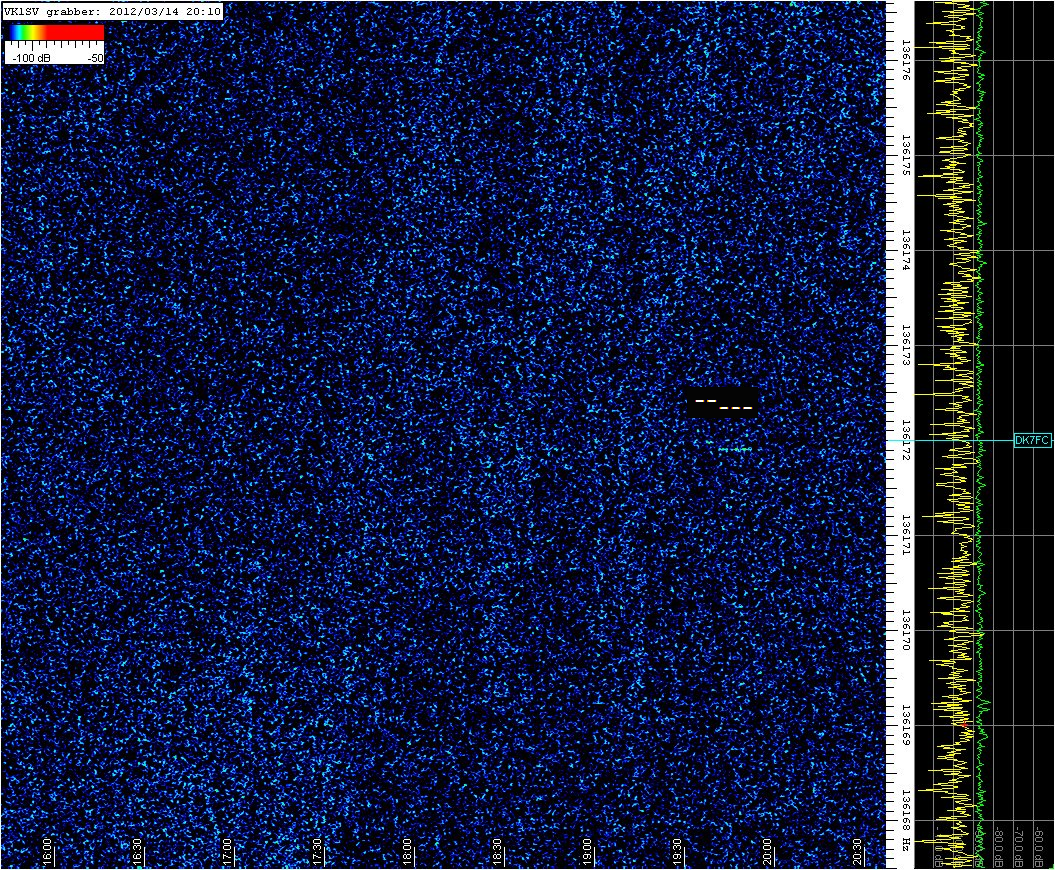
In this spectrogram, Stefan has added in the little black box what he was transmitting at that time. It has been adjusted to match the settings of my grabber. The second dash and the three dots of the "7" of DK7FC are visible. The frequency difference matches very well the dot/dash frequency difference used by Stefan. This gives us some confidence that this is indeed DK7FC's signal.
The confidence has increased by another capture which took place the following day. The experiment is continuing in the hope that an even better capture will be produced.
Another capture of Stefan's signals. In this one, the sequency "FC D" is visible.
